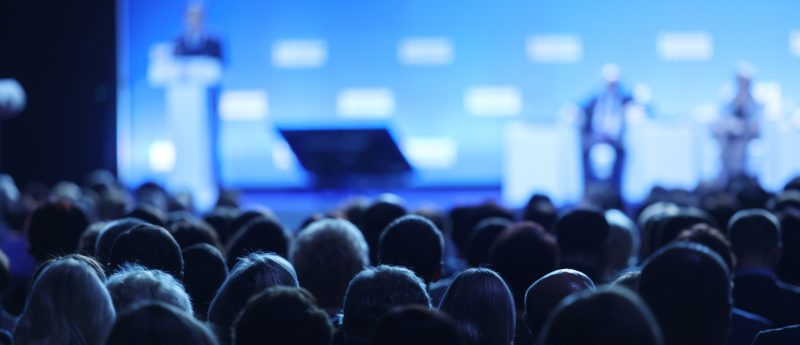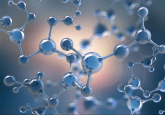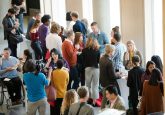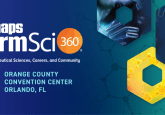Editor highlights: ASMS 2020 Reboot

In testament to the American Society for Mass Spectrometry and the hard work of the organizers, ASMS 2020 was ‘rebooted’, giving a platform and virtual meeting point for thousands of scientists to attend, present and discover the latest research in and around the field of mass spectrometry. With a wealth of on demand presentations, live recordings, short courses and poster sessions made accessible in offices and homes throughout the world, ASMS 2020 Reboot was a pleasure to attend. In this round-up, we summarize some of our highlights from the virtual conference.
The latest in single-cell mass spectrometry
On the opening day of ASMS 2020 Reboot, the live proceedings were kicked off by Peter Nemes (University of Maryland, MD, USA). In the first live event of the conference, Nemes shared his perspectives and expertise in the development and applications of single-cell mass spectrometry techniques.
Nemes began by emphasizing the importance of understanding cell heterogeneity in the development of healthy cells and biological systems, not just in disease states. During the tutorial, he explored the exciting potential of single-cell mass spectrometry (SCMS) techniques and how we might be able to use these to begin to truly understand the proteome and metabolome.
Despite the potential analytical power of SCMS, the tutorial made it clear that, although the field has seen significant development, SCMS techniques are still in their infancy. Additionally, Nemes stressed that one size does not fit all when it comes to measuring peptides, proteins or metabolites in single cells, this complexity requires nuanced techniques.
The vast molecular complexity of the metabolome (~114,000 metabolites) and proteome (~10,000–20,000 human proteins without accounting for PTMs) presents a significant number of challenges to overcome. The dynamic nature of such systems must also be taken into consideration, with environments changing in seconds, days, months and years.
A key takeaway from Nemes tutorial was the importance of scientific rigor. Nemes pointed out the potential for single-cell research to drive revolutionary changes in systems biology, bioanalytical and translational research fields. However, when processes as seemingly inconsequential as cell sorting can affect redox state and cellular metabolome [1], and different dissection conditions lead to detectable differences between identical cells [2], scientific rigor is imperative.
If you are interested in learning more about single-cell mass spectrometry techniques, make sure you don’t miss Ben Orsburn’s (Proteomic und Genomic Sciences, MD, USA) editorial – ‘The single-cell proteomics revolution’ – which explores the development and potential applications of Single Cell Proteomics by Mass Spectrometry (SCoPE-MS) in more depth.
Getting to grips with gender bias in STEM
In her lecture, Corinne Moss-Racusin (Skidmore College, NY, USA) discussed some of the powerful results from research investigating gender bias in STEM. Moss-Racusin opened the presentation with some alarming statistics: the shocking results of the long-term modeling of crash-test dummies on men (women are 17% more likely to die than men in a car crash and 71% more likely to be moderately injured [3]).
Alarming statistics aside, Moss-Racusin encouraged attendees to question how pervasive gender bias is in STEM? Following an audience poll, it was revealed that up to 2017, only 1% of the total number of Nobel Laureates for physics were women, displaying a stark gender gap in the recognition at the highest level of science. During the presentation Moss-Racusin outlined her research identifying the factors that contribute to gender bias in STEM and interventions that can be used to address the problem.
Moss-Racusin discussed the findings of the famous John/Jennifer experiment, summarizing the first experimental evidence of gender bias in STEM at faculty member-level. Perhaps most interesting is the fact that these data indicate gender bias appears to be independent of faculty member demographics, including age and gender [4].
Having summarized the experimental data indicative of gender bias in STEM, Moss-Racusin moved on to discuss the consequences of gender bias, explaining that the data do not support the idea that women are not naturally excited about STEM. Rather, it seems that women are deterred by bias and engaged by the prospect of gender equality [5].
Moss-Racusin then moved on to discuss the work aiming to address gender bias in STEM. This work is focused on developing and evaluating evidence-based interventions, in the form of Video Interventions for Diversity in STEM (VIDS). The VIDS, short video clips, which expose viewers to empirical results from published gender bias research, are now freely available to scientist and educators. Results from VIDS research showed an increase in participants’ awareness of gender bias and a reduction in gender bias with effects persisting up to an impressive 6 months.
Moss-Racusin concluded the lecture emphasizing the fact that gender bias does exist in STEM, with stark experimental evidence to back up this sentiment. It has consequences for individual scientists and for science as a whole. Additionally, the problem is not fixing itself with research indicating younger cohorts are not less biased. However, with appropriate evidence-based intervention we can fix it, and for the advancement of scientific enterprise, this is something we should all be working towards.
Understanding the importance of glycosylation
Heather Desaire’s (University of Kansas, KS, USA) exploration of glycosylation analysis by MS and its importance was another great presentation at ASMS 2020. We caught up with Desaire before the conference to discuss her presentation in an exclusive interview, which you can read here.
Desaire began her presentation by highlighting the recent growth of glycomics, which has overtaken other MS research applications, taking glycomics from the ‘cinderella’ science to a significant and important field full of innovators.
Desaire explained that the field of glycomics requires innovators due to the complexity of the molecules being studied, which build from simple monosaccharides, giving a wide variety of complex glycans.
Since glycans are not genetically encoded and all start out the same, they have important implications in many research applications. ‘Normal’ glycosylation changes for many reasons, including when protein folding changes, when modifying enzymes change and when co-factors change. Since glycans vary depending on protein structure, cell type and cell environment, they can be a very good indicator of when a cell is ‘sick’, making them ideal biomarkers.
Desaire explained the possibility of contributing meaningfully to the field of glycoprotein research using a variety of mass spectrometry platforms, highlighting the applications, benefits and limitations of different techniques.
After summarizing a variety of glycoprotein research using GC-MS, MALDI-MS and LC-ESI-MS/MS, Desaire focused on the implications of glycoprotein research in vaccine development. Desaire’s 2017 research indicated that HIV vaccine candidates at the time were failing to mimic glycosylation of HIV envelope proteins [6]. Although there is still no HIV vaccine, Desaire explained that the field is making good progress, guided by the latest glycoprotein research.
In closing the presentation, Desaire focused on the contributions of glycoprotein research in biomarker identification, highlighting the potential for success in the fields of cancer, heart disease and Parkinson’s disease.
Antibody free biomarker quantitation by LC–MS
In one of the many on demand oral sessions, Bo An of GlaxoSmithKline (PA, USA) presented research focused on the development of a high-throughput antibody free platform for the quantification of biomarkers in complex matrices. Bo introduced the presentation discussing the challenges that still remain when performing absolute quantitation of biomarkers using increasingly popular LC–MS approaches.
How can issues with sensitivity, the main challenge for absolute quantitation of biomarkers by LC–MS, be addressed? He discussed the difficulties often caused by high abundance matrix proteins and acknowledged the challenges that can be caused by biotherapeutic interference in certain workflows.
Successful bioanalysis requires strategies to simplify matrices, helping to improve selectivity and thus sensitivity. The focus of the presentation, and a potential solution to the challenges he outlined, was an antibody free, bottom-up strategy for the absolute quantitation of low abundance biomarkers in biomatrices.
The workflow proposed to address the issues with antibody quantification, comprises high capacity orthogonal fractionation with on-line monitoring followed by robust, high-throughput and sensitive trapping micro LC–MS analysis.
He concluded the presentation with some exciting results, demonstrating that the developed antibody-free approach has achieved greater than 20 times improvement in sensitivity compared to direct analysis. Some results showed comparable sensitivity to that achieved with hybrid LBA/LC–MS methods.
Conclusion
In light of the coronavirus pandemic, it was a pleasure to still be able to attend ASMS 2020, in the accessible ‘reboot’ form. The conference hosted a huge amount of content, the majority of which will remain available to view on demand until August 31 thanks to the online format. The Bioanalysis Zone team look forward to seeing what the ASMS 2021 meeting holds.
References
[1] Llufrio EM, Wang L, Naser FJ and Patti GJ. Sorting cells alters their redox state and cellular metabolome. Redox Biol. 16, 381–387 (2018).
[2] Nemes P, Knolhoff AM, Rubakhin SS, Sweedler JV. Single-cell metabolomics: changes in the metabolome of freshly isolated and cultured neurons. ACS Chem. Neurosci. 3(10) 782–792 (2012).
[3] Kahane CJ. Injury vulnerability and effectiveness of occupant protection technologies for older occupants and women. Washington DC National Highway Traffic Safety Administration. Report No. DOT HS 811 766 (2013).
[4] Moss-Racusin CA, Dovidio JF, Brescoll VL, Graham M and Handelsman J. Science faculty’s subtle gender biases favor male students. PNAS, 109, 16474–16479 (2012).
[5] Moss-Racusin CA, Sanzari C, Caluori N and Rabasco H. Gender bias produces gender gaps in STEM engagement. Sex Roles, 79, 651–670 (2018).
[6] Go EP, Ding H, Zhang S et al. Glycosylation benchmark profile for HIV-1 envelope glycoprotein production based on eleven Env trimers. J. Virol. 91(9) e02428-16 (2017).






